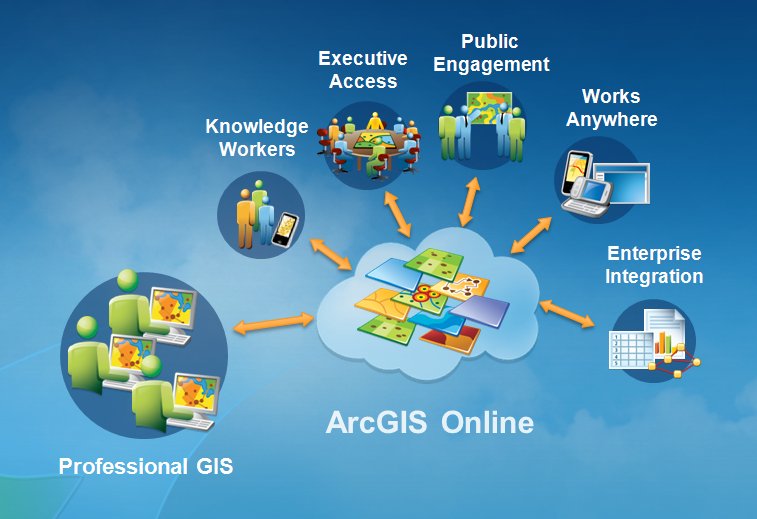At the foundation of Esri’s work are the belief and vision that geography is a science that creates a better understanding of our world. Using GIS, geography has also become a unifying framework for integrating many forms of digital information. GIS has now become an important technology in almost every field, improving efficiency, communication, and decision making. Our users have made GIS come alive in countless applications across thousands of organizations. I would like to both acknowledge and thank our users and partners for supporting Esri’s mission of evolving our GIS technology.
Historical Context
Over the last four decades, Esri has evolved both its business model and technology offerings through four distinct phases always focused on GIS software services and support.
In the early years (1969 to 1980), Esri applied GIS as services work. These were largely GIS-based planning, engineering, and environmental projects. We used our own custom software to carry out hundreds of mapping and geographic analysis projects at scales ranging from small sites to global analysis.
In the 1980s and 1990s, Esri’s focus shifted dramatically toward developing and disseminating generic GIS software tools and products. Our work centered on developing software products that enabled users to do their own applications and build full GIS systems. We also provided technical and educational support and implementation services and developed a robust partner network that resulted in our partners being technical and marketing leaders in their fields.
Over the last 15 years, Esri has focused on extending our products to support enterprise GIS implementations. This entailed expanding the capabilities of our products, adding enterprise licensing and support services, and providing new solution architecture needed to support enterprise-scale systems.

The next big step has involved transforming ArcGIS into a geospatial platform. This is a dramatic shift and a major turning point for both our users and Esri itself. One of the exciting parts of this shift is the huge opportunity this architecture provides our users. It is also worth noting that the engineering we have done ensures that the technologies that our existing users employ (desktop, server, databases, etc.) are fully integrated. The new platform has the effect of integrating existing deployments into a system of custom, leveragable, systemic resources.
ArcGIS as a platform leverages web and cloud patterns using a SaaS business model. It provides a place for sharing user content, as well as a large library of ready-to-use basemaps and geospatial services as part of the platform. Finally, the platform supports many easy-to-use applications, including self-service mapping and ready-to-use templates that support individuals, organizations, governments, and developers.
ArcGIS as a Platform
ArcGIS Online is an entirely new part of ArcGIS and extends ArcGIS into a platform, providing both online mapping/geographic analysis, as well as enterprise portal and geospatial content management. It complements and extends on-premises ArcGIS resources by providing cloud computing, as well as rich content and services.
ArcGIS as a platform provides open geospatial capabilities to any user and allows access by any application on any device anywhere, anytime. A new concept of dynamic web maps is a central aspect of this platform and facilitates the organization, sharing, and use of geospatial content, maps, and data within groups and across divisions of an organization, as well as between organizations and the public.
ArcGIS also includes a large library of applications and templates that are used to access and apply this content in multiple settings, including mobile, tablet, and desktop environments.

The Goal Is Opening GIS to Everyone.
One of the primary drivers of the ArcGIS as a platform initiative has been making GIS easier not only for new users but for advanced users, as well. In addition, the platform is open, extendable, and can be leveraged by others, facilitating both the integration of other geospatial technologies, as well as other enterprise IT and web services of many origins. Looking to the future, we see our platform strategy as being of great benefit and value to our users, partners, developers, and ultimately the world itself. It is already creating an ecosystem and community of GIS users who are leveraging each other’s resources and knowledge.
I’ll talk in more detail about the evolution of ArcGIS as a platform in the Winter 2012/2013 issue of ArcNews, which will be mailed to subscribers in the U.S. and available online later this month.
